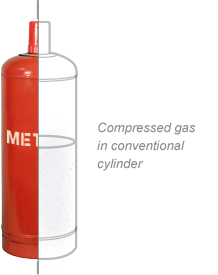After gas has been extracted from the land or sea subsurface, it needs to be delivered to consumers. The length of gas pipelines and gas distribution networks multiply exceeds the circumference of the Earth.

Gas is pumped at long distances using trunk gas pipelines, but for delivery of gas to end consumers, gas pipelines of a smaller diameter – gas distribution networks – are used. Depending on the consumer category, there are low-pressure (for gas supply to residential buildings), high-pressure, and medium-pressure networks designed for supplying industrial plants.

Transmission process requires careful attention of an entire team of dispatchers who record pumping conditions. They take note of daily and seasonal fluctuations in gas consumption at the terminal point.

Before piping
The most common method of gas delivery to consumers is the transmission via pipelines.
But before gas is pumped into pipelines, it must be treated. The matter is that different admixtures that can damage the equipment come out of the well together with natural gas. Gas is cleaned from them several times: right at the well outlet, in surface separators, and in addition during the transmission and at compressor stations.
Excess substances in gas
Gas needs to be dried, since moisture contained in it can damage equipment and form plugs in the pipe, the so-called crystalline hydrates, which are similar to wet compacted snow. Gas is dried by running it through adsorbents or by cooling the gas stream. Gas can be cooled using cooling plants or by throttling – pressure reduction in a narrow part of a pipeline. Furthermore, hydrogen sulfide and carbon dioxide must be removed from gas before it is pumped into the pipe.
Since natural gas has no odor, it is odorized before delivery to consumers.
Gas is less needed in summer
While daily fluctuations in gas consumption are controlled by dispatchers, seasonal fluctuations are compensated by changing operating conditions of the compressor station (CS), where gas is compressed, or by connection to the pipeline of a gas storage facility (UGS).
In the process of gas compression, its temperature is increased at CS, so that gas should be cooled in order to prevent damage to the equipment. To do so, air coolers (AC) are used. Besides, gas is cooled to increase the gas pipeline throughput capacity.
Natural gas occupies the smallest volume when it is in liquefied form. It can be transported as well, but in special tanks.
Gas in numbers
The maximum diameter of the gas pipeline in terms of efficiency is considered to be 1,420 millimeters.
Gazprom owns the world’s largest gas transmission system. Its length in Russia is 171,200 kilometers. If all the gas transmission lines were lined up end to end, they would circle the Earth four times.
Gazprom Group’s gas distribution subsidiaries and affiliates own and operate 746,300 kilometers of gas distribution networks.

